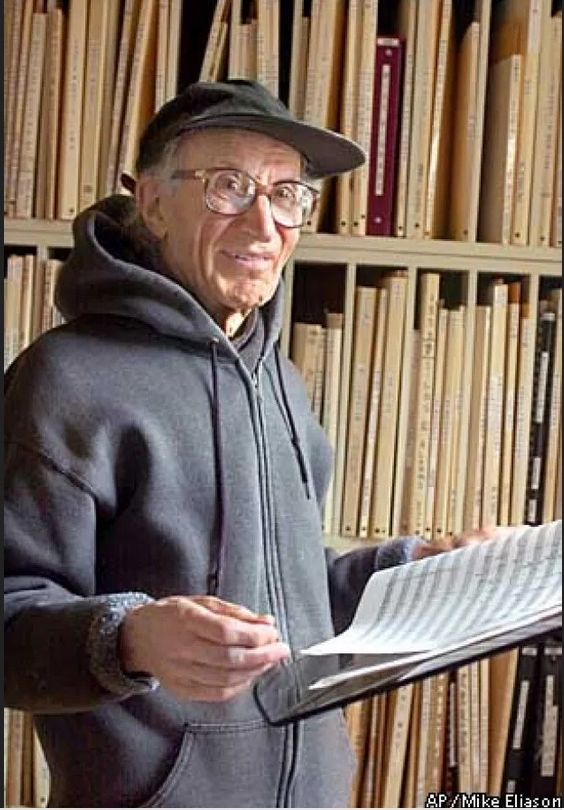

|
Henry Brant
Henry (Dreyfus or Dreyfuss) Brant was a Canadian-born American composer, conductor, and pianist. An expert orchestrator with a flair for experimentation, many of Brant's works featured spatialization techniques. Brant was born in Montreal of American parents in 1913. The son of Saul Brant, Henry began composing at the age of 8. He was enrolled from 1926 to 1929 at Montreal's McGill Conservatorium before permanently moving to the USA and studying composition with Rubin Goldmark, George Antheil, Aaron Copland, and Wallingford Riegger in New York, privately and at the Institute of Musical Art and the Juilliard Graduate School (1929-1934). Henry played violin, flute, tin whistle, piano, organ, and percussion at a professional level, and was fluent with the playing techniques for all of the standard orchestral instruments. On a recording of Macinations, he plays timpani, chimes, xylophone, glockenspiel, organ, E-flat flute, ceramic flute, double ocarina, double flageolet, and harp.As a teenager, he was the youngest composer included in Henry Cowell's landmark book American Composers on American Music, demonstrating an early identification with the American experimental musical tradition. Brant was represented in Cowell's anthology by an essay on oblique harmony, an idea which presaged some techniques used in his mature spatial works. 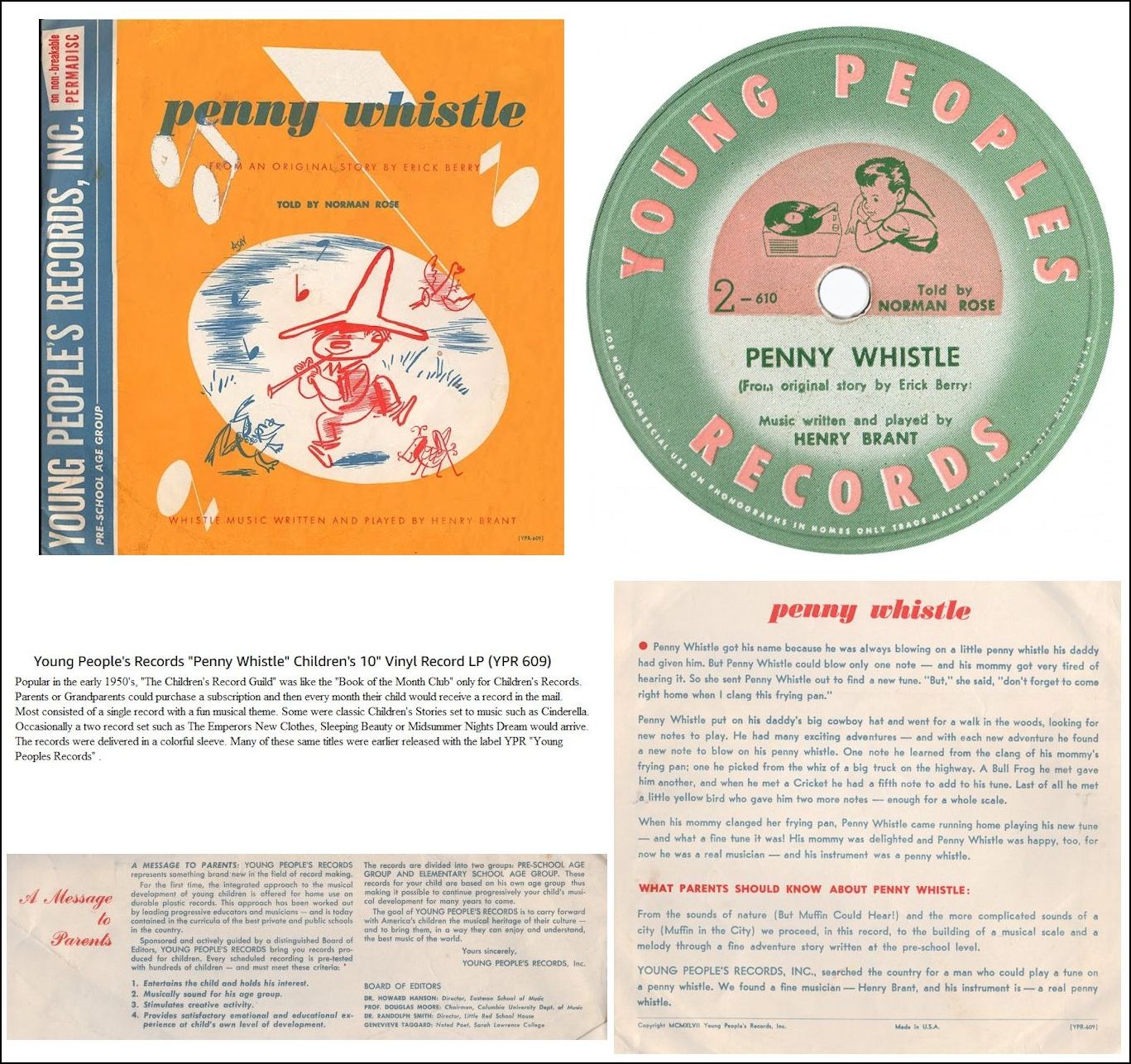
Brant then went into commercial music, conducting and arranging for radio, ballet, jazz groups, and film, and later orchestrating Hollywood film scores including The Plow that Broke the Plains (1936). The stylistic diversity of these professional experiences would also eventually contribute to stylistic polyphony of his mature works. In the mid 1950’s Brant felt that “single-style music…could no longer evoke the new stresses, layered insanities, and multi-directional assaults of contemporary life on the spirit.” In pursuit of an optimal framework for the presentation of a music which embraced such a simultaneity of musical textures and styles, Brant made a series of experiments and compositions exploring the potential for the physical position of sounds in space to be used as an essential compositional element. As a prolific composer and an audacious and inventive creator, Brant became an important figure in contemporary music in the USA. He was fascinated by esoteric instruments and the possibilities of antiphonal composition, for spatially separated groups of instruments. Brant's work also employed controlled improvisation and, beginning in the 1980’s, world music instruments. He also frequently called for unusually large forces (eg 80 trombones, 75 guitars). His earliest spatial work was Antiphony I (1953). The practice of placing the players throughout the venue dominated his work from that point. His own performance notes for An American Requiem for wind symphony illustrate this: ". . . performances must not be attempted with all the instruments placed on stage, or all together in any single area". The notes contain explicit instructions on placement of players in aisles, balconies, and elsewhere around the hall. In addition to his works for the concert hall, Brant was active as an orchestrator for many Hollywood productions including the Elizabeth Taylor movie Cleopatra (1963), one of many collaborations with composer Alex North. Brant helped with the orchestration of North's score for 2001. Due to North's stress-induced muscle spasms, Brant had to conduct the recording session for the film score, which was eventually discarded by the director, Stanley Kubrick. Among the later film scores Brant orchestrated were Carny; and Good Morning, Vietnam. Henry Brant also worked as orchestrator for composers Virgil Thomson, Aaron Copland, George Antheil, Douglas Moore, and Gordon Parks. Brant's work as an orchestrator was not limited to film and stage. His long-term affinity for the music of Charles Ives - whose The Unanswered Question was an acknowledged inspiration for Brant's spatial music - was ultimately found in the premier of Brant's arrangement of Charles Ives' Second Piano Sonata, Concord, Mass 1840-60 as A Concord Symphony. He conducted its world premiere at the National Arts Centre, Ottawa, on June 16, 1995. [It was recorded, as shown below.] 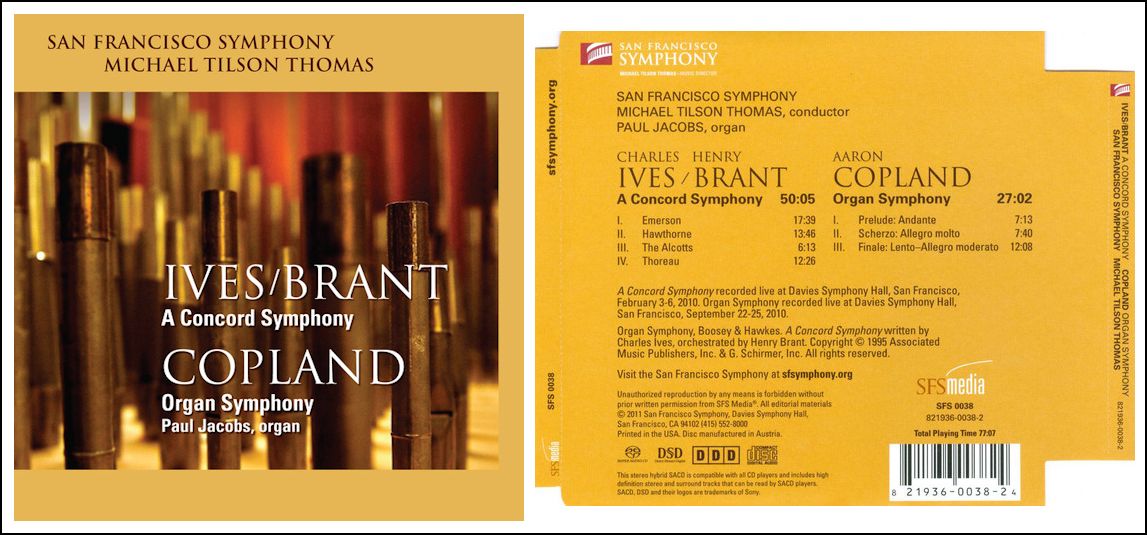
Among other Brant works performed in Canada have been Ice Field (performed by Esprit Orchestra); and Ghosts and Gargoyles for solo flute and flute choir (premiered Toronto on May 26, 2002). His music was heard often at new music festivals in the USA and Europe. He received numerous commissions from Columbia University, Lincoln Center for the Performing Arts, the American Composers Forum (New York City), the Serge Koussevitzky Music Foundation, and the Getty Research Institute. Brant taught at Columbia University (1945-1952), the Juilliard School (1947-1954), and Bennington College in Vermont (1957-1980). Brant stated, "Every new work of mine ... requires a differently constituted ensemble of instruments and/or voices. It is planned for a different occasion, has a different length, and is designed for a different space, auditorium, and audience capacity" (Strings, January 1, 2008). Describing Brant's particular brand of new music, American Record Guide said, "Brant's music is rooted in iconoclastic notions of what music is" (American Record Guide, January-February 1997). Brant continued composing well into his 90s. From 1981, he made his home in Santa Barbara, California where he died on April 26, 2008 at the age of 94. Beginning with the 1953 score Rural Antiphonies (predating Stockhausen's Gruppen of 1955-57), Brant developed the concept of spatial music, in which the location of instruments and/or voices in physical space is a significant compositional element. He identified the origins of the concept in the antiphonal music of the late renaissance and early baroque, in the antiphonal use of four brass ensembles placed in the corners of the stage in the Requiem of Hector Berlioz and, most importantly, in works of Charles Ives, in particular The Unanswered Question. Brant was America’s foremost composer of acoustic spatial music. The planned positioning of performers throughout the hall, as well as on stage, was an essential factor in his composing scheme and a point of departure for a radically expanded range and intensity of musical expression. His mastery of spatial composing technique enabled him to write textures of unprecedented polyphonic and/or polystylistic complexity while providing maximum resonance in the hall and increased clarity of musical detail for the listener. His catalogue comprises over 100 spatial works. In keeping with Brant’s belief that music can be as complex and contradictory as everyday life, his larger works often employ multiple, contrasting performing forces, as in Meteor Farm (1982) for symphony orchestra, large jazz band, two choruses, West African drum ensemble and chorus, South Indian soloists, large Javanese Gamelan ensemble, percussion orchestra and two Western solo sopranos. Brant’s spatial experiments convinced him that space exerts specific influences on harmony, polyphony, texture and timbre. He regarded space as music’s “fourth dimension,” (after pitch, time and timbre). Brant experimented with new combinations of acoustic timbres, even creating entire works for instrumental family groups of a single timbre: Orbits for 80 trombones, organ and sopranino voice [LP jacket shown below], Ghosts & Gargoyles for 9 flutes, and others for multiple trumpets and guitars. This predilection for ensembles of a single tone quality dates from Angels and Devils (1932) for an ensemble of 11 flutes. With the exception of pieces composed for recorded media (in which he used over-dubbing or acoustical sound sources), Brant did not use electronic materials or permit amplification in his music. Brant is perhaps best known for his compositions Verticals Ascending (conceptually based on the architecture of the Watts Towers in Los Angeles) and HorizontalsExtending. A "spatial opera", The Grand Universal Circus (Libretto: Patricia Gorman Brant) was premiered in 1956. A member of the American Academy of Arts and Letters, Brant was awarded the 2002 Pulitzer Prize in Music for Ice Field: Spatial Narrative (2001) for Large and Small Orchestral Groups, commissioned by Other Minds and premiered by the San Francisco Symphony Orchestra under the direction of Michael Tilson Thomas [CD shown above]. He has received two Guggenheim Fellowships and in 1955 was the first American composer to win the Prix Italia. Among other honors are Ford Foundation, Fromm Foundation, National Endowment for the Arts and Koussevitzky awards and the American Music Center’s Letter of Distinction. The Paul Sacher Foundation in Basel has acquired Brant’s complete archive of original manuscripts including over 300 works (1998). In conjunction with Brant’s 85th birthday concert, Wesleyan University conferred upon him the honorary degree of Doctor of Fine Arts (1998). In addition to composing, he played the violin, flute, tin whistle, percussion, piano, and organ and frequently included soloistic parts in his large works for himself to play. Later premieres included Wind, Water, Clouds & Fire, for 4 choirs and instrumentalists, commissioned by Present Music and premiered on November 19, 2004 at The Cathedral of St. John the Evangelist, Milwaukee, Wisconsin. Tremors, for 4 singers and 16 instrumentalists, commissioned by the Getty Research Institute, premiered on June 4, 2004, at the Getty Center in Los Angeles. Tremors was repeated in a Green Umbrella concert at LA’s Walt Disney Concert Hall on November 1, 2004. Ghosts & Gargoyles, a concerto for flute solo with flute orchestra, for New Music Concerts, Toronto had its premiere on May 26, 2002. Brant's handbook for orchestration, Textures and Timbres, was published posthumously.
== The text of the biography in this box is mostly
taken and edited (amazingly) from the Bach Cantatas website! Photos
are from other sources. |
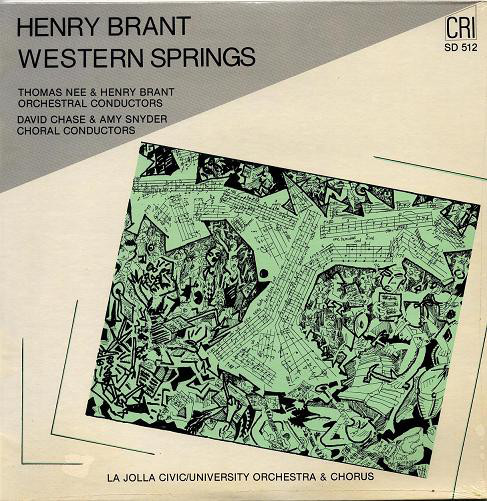
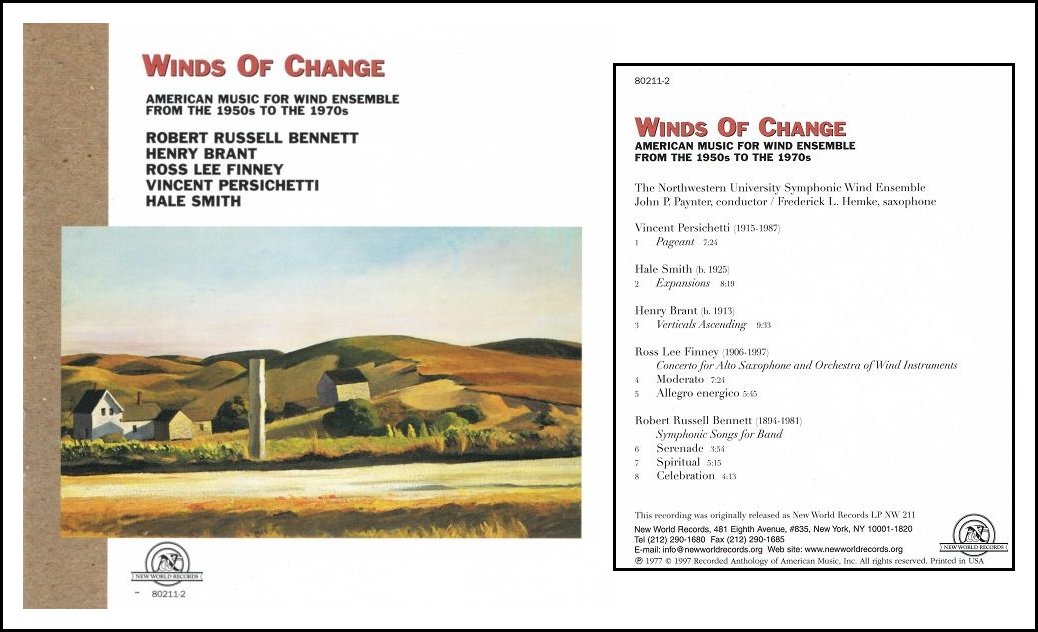
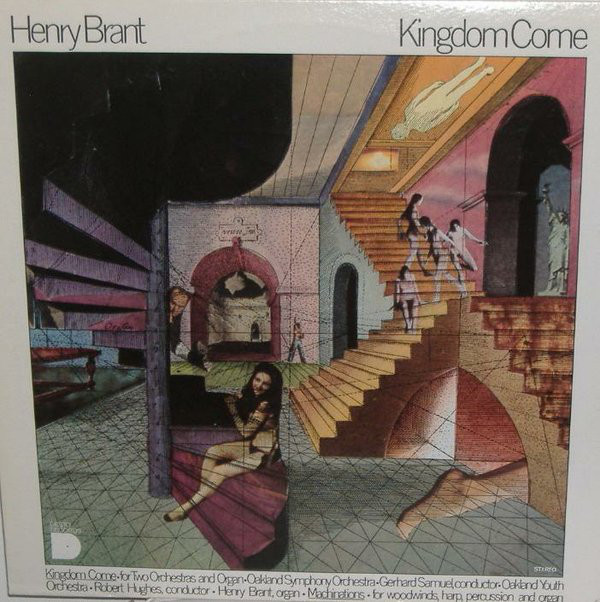 Brant: No!
Brant: No!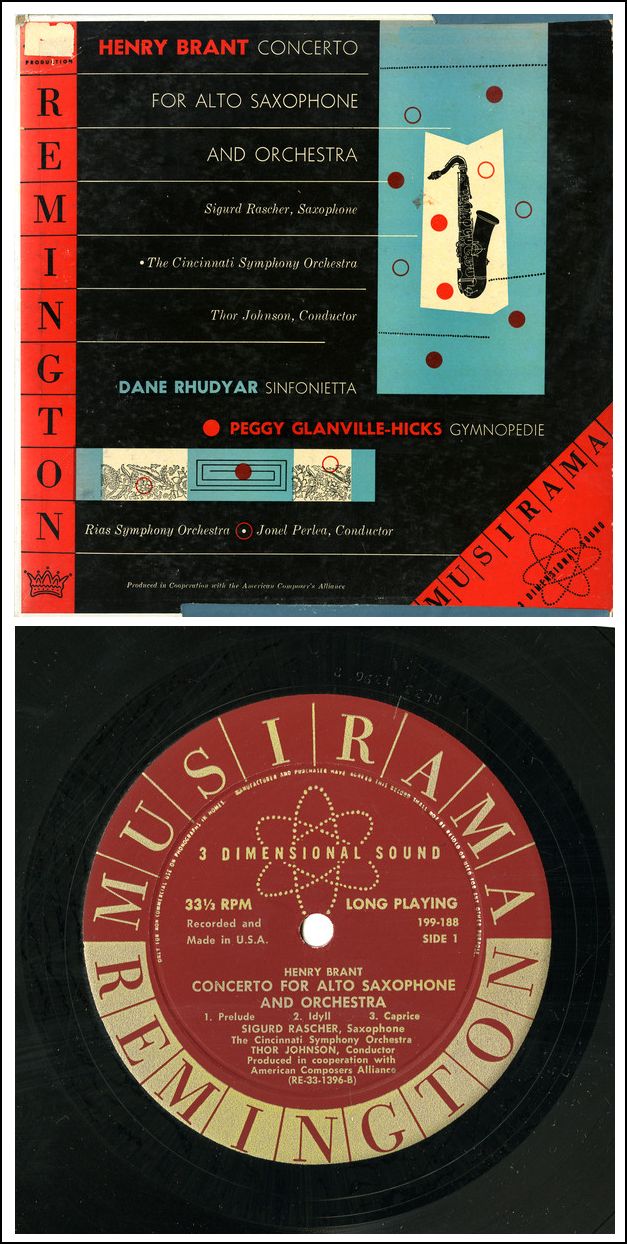 BD: Before we come back to Ives, let me ask about something
like an opera of Verdi, where he calls for an offstage band. Is
that not spatial music?
BD: Before we come back to Ives, let me ask about something
like an opera of Verdi, where he calls for an offstage band. Is
that not spatial music?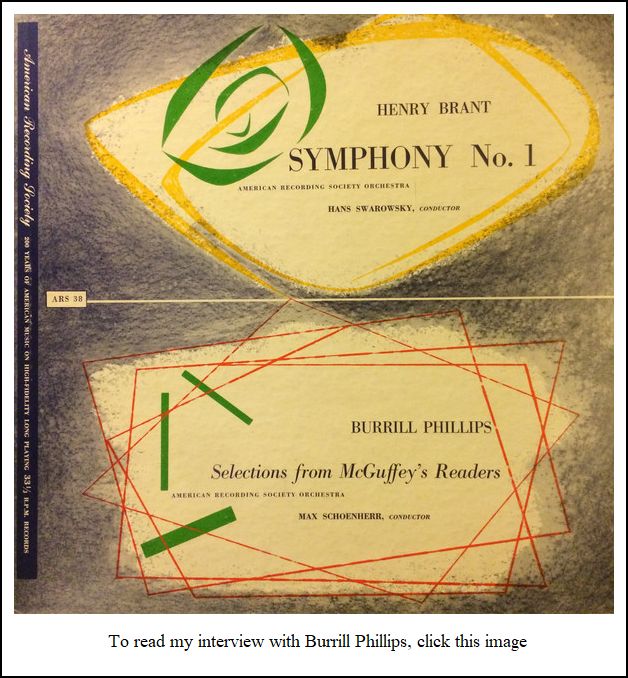
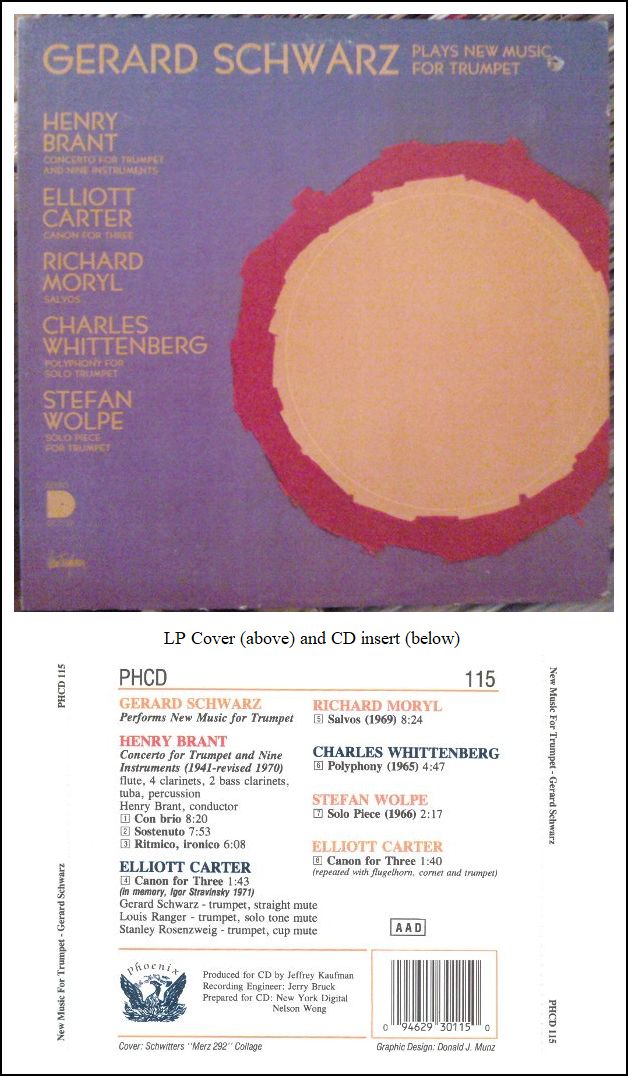
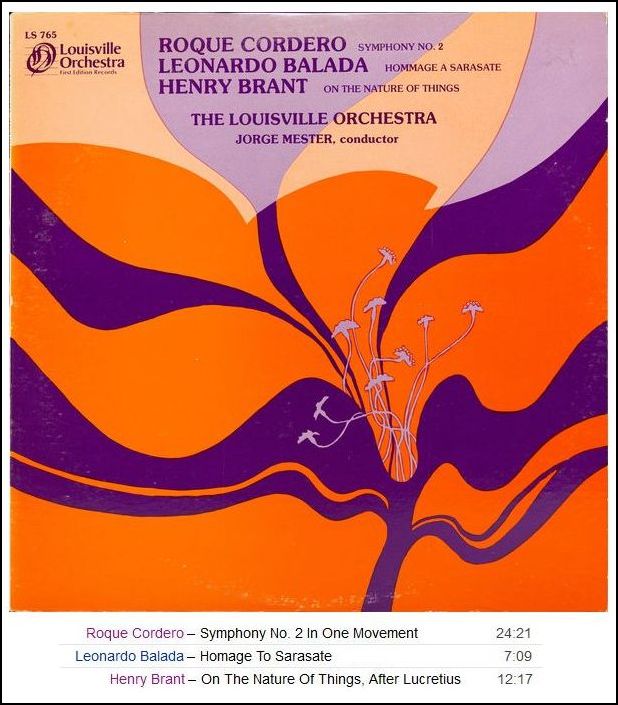
| Henry Brant’s new guide to orchestration is,
in fact, the result of his lifelong work as a conductor, composer, and
teacher. Its first page was written in the 1940s, and its final page was
written in 2005. In observation of other orchestration texts throughout
his life, Brant realized that many were incomplete, in that they gave
instructions based on hoped-for evocations of mystic visions rather than
the actual, practical qualities of instruments. Textures and Timbres
focuses on the study of acoustic instrumental tone-qualities, offering
comprehensive systematic procedures for balancing and mixing them, both
in harmonic and linear contexts. The lessons and inspiration shared in
this text span Brant’s entire career, from his work in commercial radio
to his orchestration classes at the Juilliard School and orchestrations
of numerous Hollywood film scores. Textures and Timbres: An Orchestrator’s
Handbook is an absolutely vital tool for the conductor. [From the Amazon.com
listing] |
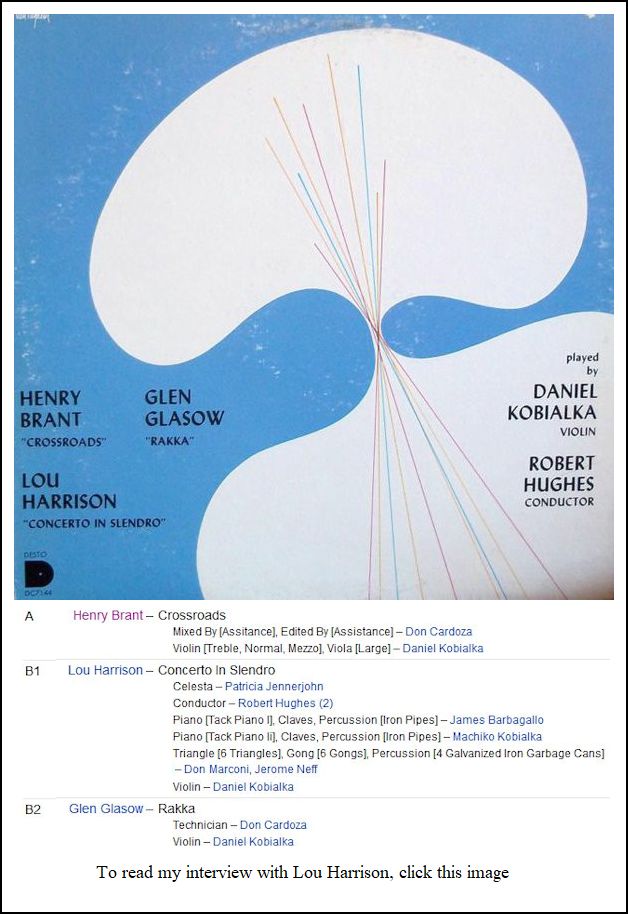 Brant: Thank you! I appreciate that.
I’ve enjoyed speaking to you. In a general way, these things aren’t
easy to talk about, because spatial ideas above all need the sound. We
haven’t had a single note of spatial music in the last hour, yet we’ve been
able to discuss this. You’ve made the format a very interesting one.
Brant: Thank you! I appreciate that.
I’ve enjoyed speaking to you. In a general way, these things aren’t
easy to talk about, because spatial ideas above all need the sound. We
haven’t had a single note of spatial music in the last hour, yet we’ve been
able to discuss this. You’ve made the format a very interesting one.© 1988 Bruce Duffie
This conversation was recorded on the telephone on January 9, 1988. Portions were broadcast on WNIB the following September, and again in 1998; Copies of the unedited audio have been placed in the Archive of Contemporary Music at Northwestern University, and in the Oral History of American Music archive at Yale University. This transcription was made in 2021, and posted on this website at that time. My thanks to British soprano Una Barry for her help in preparing this website presentation.
To see a full list (with links) of interviews which have been transcribed and posted on this website, click here. To read my thoughts on editing these interviews for print, as well as a few other interesting observations, click here.
Award - winning broadcaster Bruce Duffie was with WNIB, Classical 97 in Chicago from 1975 until its final moment as a classical station in February of 2001. His interviews have also appeared in various magazines and journals since 1980, and he now continues his broadcast series on WNUR-FM, as well as on Contemporary Classical Internet Radio.
You are invited to visit his website for more information about his work, including selected transcripts of other interviews, plus a full list of his guests. He would also like to call your attention to the photos and information about his grandfather, who was a pioneer in the automotive field more than a century ago. You may also send him E-Mail with comments, questions and suggestions.